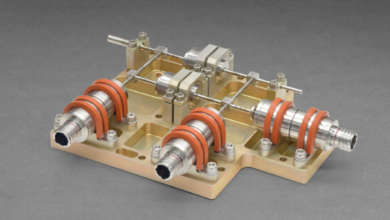Top 7 Reasons to Invest in Acid-Resistant Pumps Before Your Next Plant Upgrade

During a plant upgrade, every component matters. Yet many facilities invest in automation, process efficiency, or new production lines—but keep legacy pump systems running until failure. This is especially risky when dealing with aggressive chemicals.
Acid-resistant pumps are critical when acids form a core part of your fluid handling process. These pumps are specifically built to survive chemical attack, manage pressure and heat, and contain leaks. Ignoring them during an upgrade means exposing your plant to the same old risks in a brand-new setup.
Here are seven reasons you should make acid-resistant pumps a non-negotiable part of your next plant investment.
1. Reduced Downtime from Corrosion‑Related Failures
Corrosion is one of the most frequent and expensive causes of pump failure in chemical plants. Acids degrade metal walls, weaken gaskets, and pit impellers—until the pump leaks, seizes, or shuts down unexpectedly. Each failure means:
- Lost production hours
- Emergency maintenance
- Hazardous material cleanup
- Delay in resuming operations
Acid resistant pumps use materials like PVDF, PFA, or proprietary polymer blends that resist acid attack. They also feature wall thickness designs and seamless liners that slow or stop pitting and erosion.
Common Failure Points in Standard Pumps:
| Component | How It Fails |
| Impeller edges | Thinning from acid and high velocity |
| Seals | Degradation from chemical exposure |
| Casing walls | Localized corrosion and softening |
| Bolted joints | Crevice corrosion and acid leaks |
Preventing these failures means more uptime, fewer surprises, and more stable operations.
2. Improved Plant Safety and Leak Containment
When pumps leak acids, it’s not just a mess it’s a safety incident. Employees get exposed. Floors get damaged. Vapors corrode nearby systems. And the risk of a regulatory fine or shutdown grows.
Acid resistant pumps are designed with leak containment built in. Rather than relying on external fixes, they include:
- Seal chambers with leak-capture pathways
- Secondary containment casings
- Integrated drains and vent lines
- Smooth, sealed wetted surfaces with no micro-cracks
Built-In Safety Features in Premium Models:
- Double mechanical seals: One fails, the second holds.
- Buffer chambers: Pressurized or liquid-filled zones that contain leaks.
- Leak detection ports: Early indicators for intervention before major failure.
- Corrosion-resistant hardware: Prevents failure in mountings, bolts, and flanges.
For companies under strict EHS or ISO regulations, these features are not optional—they’re required.
3. Compatibility with a Wider Range of Acids and Mixed Media
Chemical processes aren’t static. Today’s process might involve sulfuric acid; next year, it might be nitric, phosphoric, or hydrofluoric. Some plants handle mixed streams or alternate waste acids.
Standard pumps are built for one material. Acid resistant pumps are designed with broad chemical compatibility, so they stay reliable even when process fluids change.
How Multi‑Acid Compatibility Reduces Costs:
- Fewer pump SKUs across lines
- Simpler spare parts inventory
- Cross-line backup is possible in emergencies
- Less risk of using the wrong pump for a new chemical
One versatile pump type is easier to manage than ten specialized ones. This flexibility pays off long-term.
See also: Building Engaging Learning Environments with EdTech Software
4. Better ROI with Fewer Pump Replacements
The cheapest pump isn’t the one with the lowest price tag. It’s the one that runs longest with the least maintenance. Acid resistant pumps may cost more up front, but they often outlast standard pumps by 2 to 4 times.
Consider:
- Reduced service hours
- Lower frequency of part replacements
- Less emergency downtime
- Fewer stored backups
Lifecycle Cost Comparison (Over 5 Years):
| Cost Element | Standard Pump | Acid-Resistant Pump |
| Unit cost | ₹1.5 lakhs | ₹2.2 lakhs |
| Replacements | 2–3 | 1 |
| Downtime loss | ₹10+ lakhs | < ₹2 lakhs |
| Maintenance hours | High | Low |
| Total cost | ₹15–18 lakhs | ₹6–8 lakhs |
By Year 2, the acid-resistant pump has already paid back the difference—and keeps saving money after.
5. Enhanced Performance in High‑Temperature Acid Systems
Many acids are used hot, especially in:
- Neutralization
- Evaporation
- Scrubbing or reaction loops
At elevated temperatures, corrosion rates rise. Seals expand. Some polymers soften. Metal parts fatigue faster.
Acid-resistant pumps are engineered to retain mechanical strength at temperatures. With thick polymer walls, temperature-stable seals, and non-reactive housings, they avoid the warping or cracking that plagues ordinary pumps.
Why Thermal Stability Matters:
- Prevents shaft misalignment due to casing expansion
- Reduces chemical attack acceleration under heat
- Maintains seal integrity during startups and shutdowns
- Avoids pump casing deformation or collapse
For plants running 24/7 hot acid loops, this stability is non-negotiable.
6. Lower Maintenance and Spare Parts Dependency
Acid damage increases wear—not just in pumps, but in your workforce. Teams get pulled in to fix the same pumps over and over. The storeroom fills with speciality parts. Repair cycles become routine.
Acid-resistant pumps:
- Require fewer seal replacements
- Maintain impeller geometry longer
- Have corrosion-proof fasteners and hardware
- They are built for modular repair, not full disassembly
Design Advantages That Simplify Maintenance:
- Standard seal kits for multiple models
- Quick-change impeller designs
- Flushable chambers to remove scale buildup
- Inspection covers to check the condition without teardown
Lower service demand frees your team for critical improvements—not reactive firefighting.
7. Readiness for Regulatory Audits and EHS Compliance
Audits—whether internal, EHS, or from external authorities—frequently focus on chemical handling infrastructure. A leaking acid pump, corroded bracket, or poorly contained seal failure can result in:
- Non-conformance
- Heavy penalties
- Shutdown orders
- Revoked ISO certifications
Acid-resistant pumps offer design transparency and documentation. Auditors can trace:
- Materials of construction
- Leak logs and inspection records
- Certifications for acid compatibility
- Containment strategies and emergency preparedness
What Inspectors Look for in Pump Systems:
| Audit Item | Acid-Resistant Pump Advantage |
| Material traceability | Certified polymer or lined metal spec |
| Leak logs | Longer intervals, fewer events |
| Containment proof | Built-in shells, buffer zones |
| Maintenance records | Extended intervals, standard SOPs |
Proactive investment in compliant pumps avoids reactive damage control during inspection season.
Final Thoughts – A Smarter Investment for Plant Longevity
When your plant upgrade budget is tight, skipping acid resistant pumps can seem like a shortcut. But that saving is short-lived. What you save today, you’ll pay many times over in downtime, failure, injury, and penalties.
Acid-resistant pumps are a core asset in any modern chemical plant. They aren’t just tough—they’re smart investments in reliability, safety, and ROI.
Recap: Why It’s Worth the Investment
- More uptime, less corrosion-related downtime
- Built-in leak protection improves plant safety
- Works with multiple acids and mixed media
- Pays off through fewer replacements and failures
- Handles heat and stress better than metal or basic polymers
- Cuts maintenance load, parts inventory, and man-hours
- Gets you ready for audits, compliance, and inspections
If you’re rethinking your chemical lines, upgrade your pump thinking too. Acid resistant pumps aren’t an extra—they’re essential.





